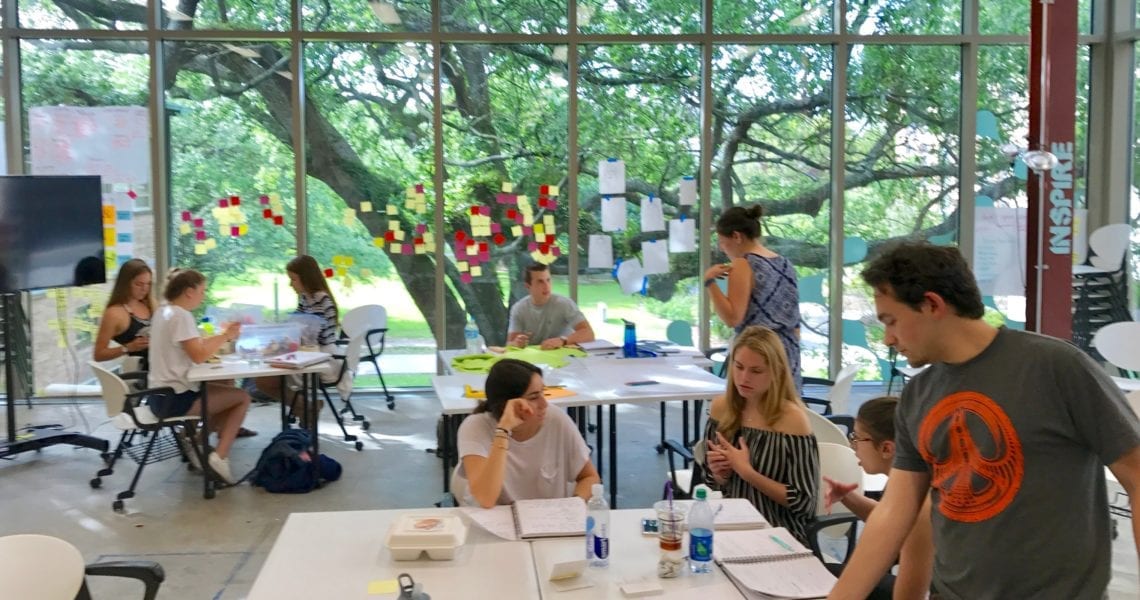
SISE class uses design thinking to help local organizations
Empathize, define, ideate, prototype, test. Five words to live by for students in Professor Allison Schiller’s Design Thinking for Collective Impact class. A core in the Social Innovation and Social Entrepreneurship minor, SISE 3010 introduces participants to the design thinking process, “a creative, collaborative approach to creating social value through better services, experiences, systems, organizations and products,” (Taylor Design Thinking FAQ).
During the semester, students pair with a community partner to tackle an organizational issue using the design thinking process. Restaurant Opportunities Center (ROC) Gulf States, an advocate for fair wages and rights for restaurant workers, provided the learning laboratory for Spring 2017.
ROC Gulf States allowed students to use their research to define the exact problem to address. The team of Braham Berg, Talia Berman, Sara Glick and Jamie Shear, found ROC lacked “hard numbers” to communicate the benefits of increased worker pay. After interviewing organization leaders, partners, restaurant workers, owners and patrons to better understand the industry and its challenges, they moved to develop, prototype and test potential solutions.
Their focus landed on data collection and processing tools (online surveys, an Excel model and pamphlet) help ROC collect meaningful facts for advocacy efforts among constituents. The surveys provide a way for ROC to collect relevant figures from restaurant workers and customers. Survey data fuels an Excel model that uses different variables of the restaurant business – menu prices, tipping levels and others – to factor how a minimum wage change could affect a restaurant financially and intangibly. Design thinking is often associated with more visual, graphic deliverables, but as Berg noted, “In our case, as Allison Schiller and the ROC Gulf States Executive Director expressed at the end of our presentation, ‘Spreadsheets can be beautiful.’”
The SISE minor is open to all students and draws on the strengths of diverse, interdisciplinary groups. Members of this team spanned four majors, undergraduate and graduate. “My group found using the human centered design approach/design thinking and outreach allowed us to collect the information we needed…falling back on our own individual skillsets, we were able to develop a tool that the non-profit probably knew was missing in their current advocacy outreach but didn’t know they needed,” said Berg.
SISE students are introduced to social innovation, human-centered design and social impact leadership concepts to develop a toolkit to create positive change. This year, Schiller’s SISE 3010 class will partner with DiscoveryFest. For more information on the SISE minor, click here.